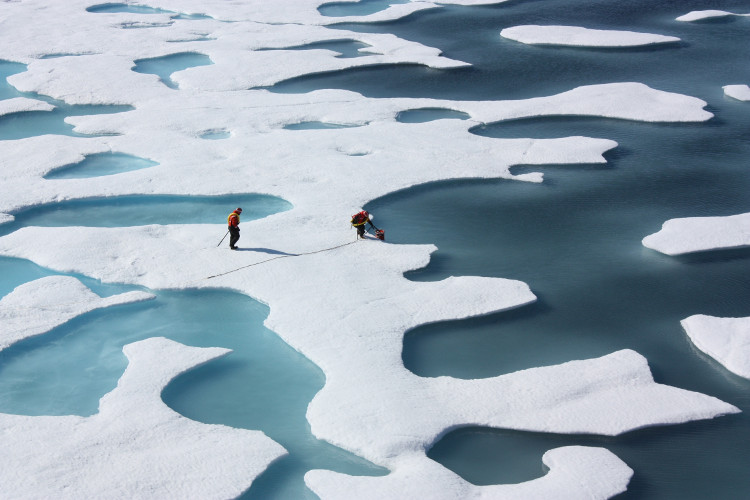The Arctic might melt ice in the middle of the century
The melting sea ice will lead to weather disasters in most Northern Hemisphere countries and accelerate global warming.
Scientists warn the Arctic Ocean may no longer be the first sea ice in 100,000 years if people do not take measures to limit global warming at 2 degrees C, Independent on March 7 reported.

Arctic sea ice is declining in size.(Photo: Flickr).
The region is experiencing a sharp increase in temperature in recent decades compared to the rest of the world. Winter temperatures in Spitsbergen Island in northern Norway are 8-11 degrees Celsius higher than the average between 1961-1990.
This will have a major impact on the climate in most of the Northern Hemisphere, increasing the number of dangerous storms. Sea ice reflects most of the energy from sunlight. If sea ice disappears, global warming will also increase.
The Arctic will be considered out of ice if the ice area falls below one million square kilometers. This means the waters surrounding the Arctic will be clear and the rest of the ice will be concentrated in small islands off the north of Russia and Canada.
Arctic sea ice decreases with time.
Last September, the Arctic sea ice decreased to about 4.1 million square kilometers, the second lowest level of 3.4 million in 2012, according to the US Snow and Ice Data Center. The Antarctic sea ice is now at a record low of 2.14 million square kilometers, compared with 3.16 million in 1981 - 2010.
- Arctic ice will melt?
- Perennial ice in the Arctic is disappearing
- The Atlantic will be
- The Arctic temperature is the highest in 44,000 years
- The Arctic lost three times as much ice as Belgium every day
- From now until 2080, the Arctic ice can melt completely
- Every second 14,000 tons of water flows into the sea because the Arctic ice melts
- Ice in the Arctic is likely to disappear by 2030
- Arctic will melt ice after 5 years
- 7 irreplaceable roles of the Arctic sea ice
- Abnormal melting ice alarm in the Arctic
- The threat from the US nuclear waste warehouse left the Arctic ice
 Is the magnetic North Pole shift dangerous to humanity?
Is the magnetic North Pole shift dangerous to humanity? Washington legalizes the recycling of human bodies into fertilizer
Washington legalizes the recycling of human bodies into fertilizer Lightning stone - the mysterious guest
Lightning stone - the mysterious guest Stunned by the mysterious sunset, strange appearance
Stunned by the mysterious sunset, strange appearance Plan to build giant canopy over Antarctica has problems
Plan to build giant canopy over Antarctica has problems  Why does ice stick to your hands when you hold it?
Why does ice stick to your hands when you hold it?  NASA releases ice map on Mars
NASA releases ice map on Mars  After 389 days in the Arctic, costing more than $160 million, hundreds of scientists brought back bad news: What was it?
After 389 days in the Arctic, costing more than $160 million, hundreds of scientists brought back bad news: What was it?  650,000-year-old 'gateway to the underworld' discovered in Siberia
650,000-year-old 'gateway to the underworld' discovered in Siberia  How to explain the strange ice circle that rotates like a time-travel door?
How to explain the strange ice circle that rotates like a time-travel door? 